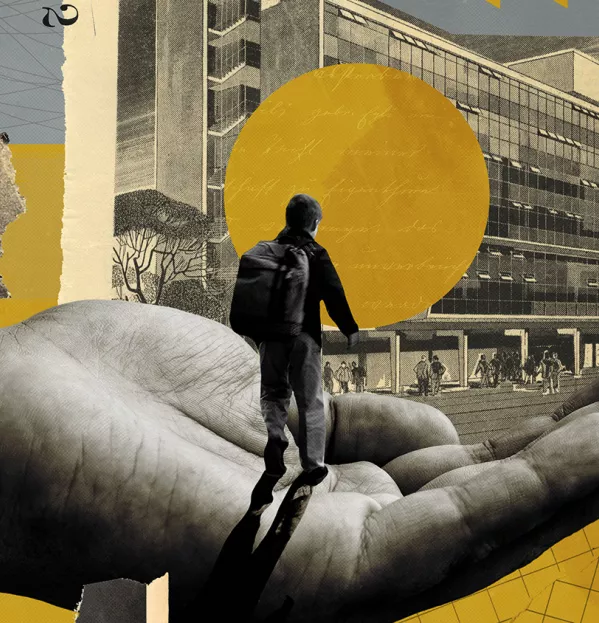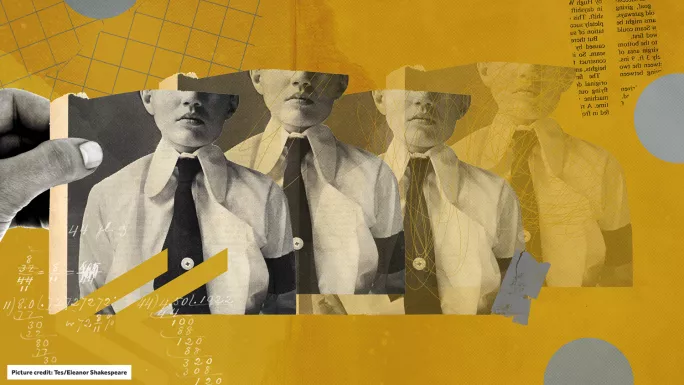- Home
- Leadership
- Strategy
- How to become a restorative school: Part 3 - Tackling the challenges
How to become a restorative school: Part 3 - Tackling the challenges

So you decided to become a restorative school, you followed the implementation process advised, you waited for the glow of success to arrive and … all you got were problems.
If you read the previous two articles in this three-part series and you know about restorative approaches in schools, you will know that they work, they have a strong evidence base and more schools are moving towards a restorative way of working. But what happens when it doesn’t work? What happens along the road to successful implementation and what can potentially threaten to derail the process?
When adopting restorative approaches, people can expect instant results. I can tell you with certainty: that won’t happen.
Here’s a common comment that you’ll get in the first few weeks: “I understand the process and I’m using my training, but the same thing just keeps happening. We had a restorative meeting last week, talked about it and he apologised - but as soon as we got back to class, the same thing happened. What’s the point in being restorative if it doesn’t change anything?”
We experienced this at our school and frustration with the process can be a huge challenge to overcome. But you have to properly analyse what goes wrong. I have been part of restorative meetings where all of the right things have been said, the process has been followed and everyone has been heard, but no one’s needs have been met. These instances did not demonstrate a failure of the concept but an error in the application: we hadn’t gone deep enough.
Often, on the first time of asking, you get a superficial response from those taking part. It is often something that is acceptable to the group, makes sense, but isn’t too controversial. You push a few more times for something more meaningful, but you get the same. At that point, you might give up. But if you asked a fourth time, people might start saying what they actually feel.
When you first start using restorative approaches, you don’t realise this, so you assume that it is the concept that is flawed. It’s not.
So what other lessons have we learned from the journey so far?
The initial issues
Our initial problems were about getting the right fit for our school. We had to really consider the language we were using; not dumb it down for children with special educational needs and disabilities (SEND) - but identify where children were on their cognitive development trajectory and introduce suitable language at the right time.
In the early stages, we did not get this right. Students sometimes used emotional language they did not understand or, owing to limited vocabulary, it was difficult for them to fully engage with what we were asking them to do. In some cases, students were just saying what they thought the adults wanted to hear or producing a rehearsed or stock answer.
Another simple and rather obvious problem was that we were working in a school. Schools have a hierarchy, rules and expectations - so if a child was talking to the headteacher about what went wrong and how they could repair the harm, they needed to do that in a respectful way, without shouting and swearing.

In a sense this was contrary to the pure form of restorative justice. Often the initial stages of a restorative conference include what can be referred to as the “vomit stage”, where it all comes out. Once this frustration is released, you can then move on to the logical thinking that facilitates a conversation leading towards a resolution.
To make this work, we learned to consider the timing of conversations, the level of challenge within those conversations and who was the most appropriate person to carry them out. Essentially, we needed to risk-assess how ready the child was to move on.
During the initial stages of implementation, there was always potential for staff not to buy in to the new process, but, in general, they welcomed it. For any lingering doubters, it only took a couple of quick wins with students who were harder to engage with for them to become supporters.
Down-the-line issues
Sustaining the restorative approach is tough. Although there were systems and processes in place, interest in restorative work fluctuated and, inevitably, key people joined and left the school. Focusing on other areas, such as a push on the academic curriculum, also impacted on our restorative work: key people directing their work towards the curriculum detracted from a focus on restorative approaches.
We learned that we needed to re-engage staff who had been there from the beginning; we had to rethink what was working well and in some cases restart interventions that had been running well in the past.
Another issue: we learned that students had begun to understand the restorative philosophy and were able to talk about the process, but this brought its own challenges. We had to become more accountable. Often, small changes that we made to our interactions or the built environment made huge differences - especially to those students with autism and/or sensory processing issues. If and when we made mistakes, we needed to apologise.
We also learned that we needed to be really organised. The whole system works on the fact you have a strong knowledge of what is happening and that the students know exactly what is expected of them. Behaviour couldn’t be forgotten - if we were not going to use a sanction, then we had to follow up with the appropriate restorative accountability.
And, of course, there were students who just didn’t want to engage with the process. That is tough, but over time we realised that, by being exposed to the restorative process, these students were learning how to regulate their emotions and how to see situations from other people’s perspectives. This is not quick and in some cases it can take years - we learned to see the long game.
These students showed that they found it easier to observe others, rather than taking part, and that with others modelling the process, it helped them to engage when they were ready to do so.
But weren’t those students getting away with it until they put their hands up and took responsibility? In most cases, I wouldn’t agree. We learned to consider revisiting situations, sometimes a number of times across many weeks, and had to look at alternative ways to present information. Some students who were not ready to have verbal interactions used simple yes/no card cues to open up discussions, while others wrote letters and some even drew pictures or made posters to express how they were feeling. The key thing we learned here is that it can’t be a one-size-fits-all approach.
The current issues
The key issue now is balancing the restorative work in our school. Staff have an excellent understanding of the process, but in some cases they are too ready to hear an apology and allow the students to move on. This wonderful acceptance can lead to students being able to manipulate the process, and that is where sometimes you need support from a wider team and someone else to provide an objective view.
A restorative approach is also very hard work both for students and staff. Staff need support and, knowing this, we have introduced a supervision model, allowing them time to discuss the emotional impact of the work on themselves. For many, this is new and uncomfortable; however, we are now on a new journey towards making this a cultural norm.
The restorative accreditation is designed to ensure longevity for our work and alongside this sits CPD for staff. Members of our therapeutic team are now studying towards foundation degrees in therapeutic care for children and young people, and these formalised arrangements aim to set pastoral and behavioural knowledge alongside academic pedagogy with equal weight.
Recognising the importance of this work, and providing a career path for those involved and a framework for support and challenge, is of the utmost importance.
A final word
So what would I say to those who say it doesn’t work? It might not to start with (it will need you to really want it to work) and it will take time, and you will need to prioritise relationships over behaviour management strategies. But the benefits when it works are huge, long-lasting and transcend the classroom into the real world.
Tom Procter-Legg is assistant headteacher at the Iffley Academy, Oxfordshire
You need a Tes subscription to read this article
Subscribe now to read this article and get other subscriber-only content:
- Unlimited access to all Tes magazine content
- Exclusive subscriber-only stories
- Award-winning email newsletters
Already a subscriber? Log in
You need a subscription to read this article
Subscribe now to read this article and get other subscriber-only content, including:
- Unlimited access to all Tes magazine content
- Exclusive subscriber-only stories
- Award-winning email newsletters



